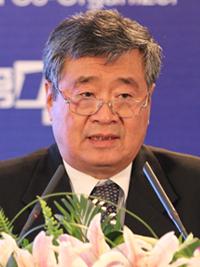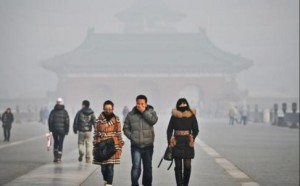June 4, 2014 – In yesterday’s Financial Times it was reported that a senior government advisor on climate change in China recommended the country place a cap on carbon emissions in the next five-year plan which would begin in 2016. For the Chinese the initiative by President Obama may finally end the dispute between the two countries over the issue of greenhouse gas (GHG) emissions. The Chinese have argued that the Western World has created the problem and therefore should take on the bulk of the responsibility while giving some slack to the Developing World which is only seeking to catch up. If that means burning coal, so be it.
What did the advisor actually say? According to Reuters, as reported in The Guardian, He Jiankun (seen below), Chairman of China’s Advisory Committee on Climate Change, made his remarks to a Beijing conference this week indicating an absolute cap on carbon emissions was to be introduced. In his words, “The government will use two ways to control CO2 emissions in the next five-year plan, by intensity and an absolute cap.” But later he downplayed his comments as being personal views and not yet government policy.
China today is the world’s largest GHG emitter having surpassed the United States in the last decade. China is choking on air pollution from coal-fired power plants blamed for the deadly smog that inundates much of the eastern half of the country for weeks at a time. Since 2000 the country’s carbon emissions have grown at a rate of 10% per year. But it wasn’t until 2009 that the country set its first carbon emissions target. Before that China applied carbon-intensity targets for unit of economic activity following a similar scheme to the one used by Canada in measuring carbon output from the Alberta oil sands. By 2012, however, it was obvious that carbon emission and intensity targets were not working with country’s CO2 emissions growing to 29% of global GHGs.Today China’s CO2 emissions have reached over 9 billion tons per year and are expected to peak at 11 billion tons before beginning to decline. Compare that to the United States which in 2012 emitted 6.5 billion tons, a decline of 3.4% from 2011. China today, therefore, is clearly in a position to impact the world’s climate more than any other country on the planet.
If the government takes their advisor’s advice maybe this will presage the beginning of a concerted effort to achieve global agreement on a carbon cap and GHGs at Paris in 2015.

















[…] Will China Follow the U.S. in National Carbon Cap? […]
Len, I’m a retired engineer, and as interested in controlling CO2 as anyone, but the idea that penalizing people for burning coal as a workable solution is little short of idiotic. 1.) It is discriminatory, as the 3rd world people point out. 2/) It is unenforceable. Chinese , a good example, are well aware that their lifespans are shortened by coal, but they want energy anyway. Of course they want to breathe also, which is why they have taken the lead in a REAL program for carbon control, namely restarting the Thorium Liquid Fueled Reactor (LFTR) system, an alternative form of nuclear fission power, designed and demonstrated as an aircraft engine during the Cold War. If you haven’t heard of it , you should look it up on Youtube. It is should end up cheaper than coal, and since Thorium is ridiculously cheap and plentiful, this should solve the CO2 problem quite nicely, with no need for any carbon caps at all. Shawn Disney
China recognizes the downside of burning coal. They are taking leadership in many ways in finding alternative energy sources including thorium reactors. I have been writing about the latter for some time. The interim between deploying a new generation of reactors and the current coal dependency is leading to intensive build outs of renewable power while seeking technologies to reduce airborne particulate matter. The Chinese leadership is very aware of a groundswell of disapproval of the environmental deterioration within the country. The Party’s future in control of the state is on the line.